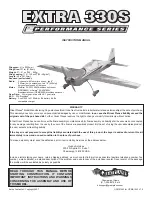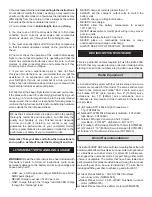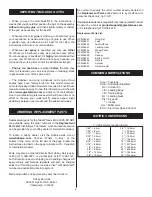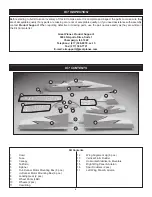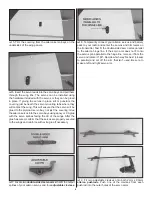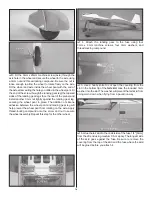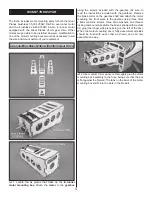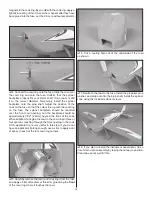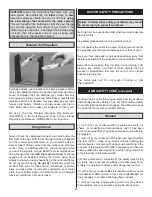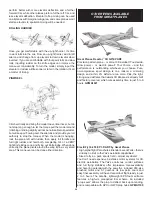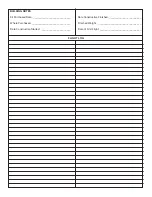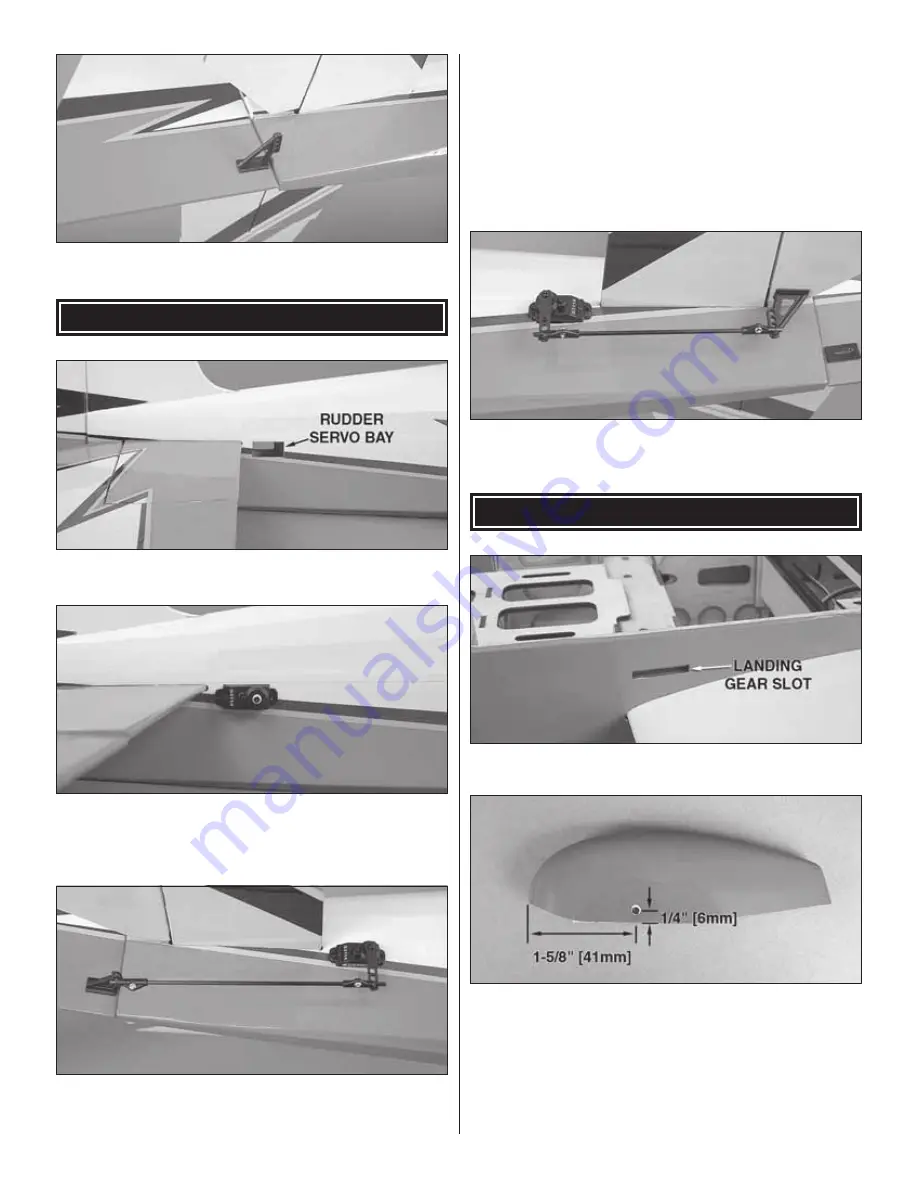
13
❏
11. Attach a control horn to the right side of the rudder
perpendicular to the hinge line in the same manner.
INSTALL THE TAIL SERVOS & PUSHRODS
❏
1. Trim the covering from the elevator and rudder servo
bays just in front of the stab on both sides of the fuse.
❏
2. Attach a 16" [400mm] servo extension to the elevator
and rudder servos. Secure the servos in the servo bays with
the splines facing forward. Use your radio system to center
the servos.
❏
3. As you did with the ailerons, test fi t the double-sided
servo arms perpendicular to the rudder servo case. If the
servo arm does not fi t onto the servo spline perpendicular to
the servo case, remove it from the servo and rotate it 180°.
Decide which way fi ts best (closest to perpendicular) and
cut off the arm that isn’t used. Attach an adjustable clevis
to the outer holes of the arm and to the rudder control horn.
Attach the arm to the servo with the servo arm screw. Install
a 6-3/4" [170mm] pushrod into the clevis, center the control
surface, and use a 2mm x 4mm self-tapping screw to secure
the clevis to the pushrod. The excess pushrod length can be
cut off.
❏
4. Install the elevator pushrod in the same manner.
INSTALL THE LANDING GEAR
❏
1. Trim the covering from the landing gear slots in
the fuse.
❏
2. Measure and mark 1-5/8" [41mm] from the front and
1/4" [6mm] from the bottom of the wheel pants. Drill a 1/8"
[3mm] hole at your marks (or use a reamer) on the inside of
each wheel pant. Accuracy during this step will ensure that
your wheels are positioned straight inside the pants. When
drilling the hole, make a pilot hole with a smaller bit fi rst, then
enlarge the hole to the correct diameter. Be sure to make a
left and right wheel pant!

